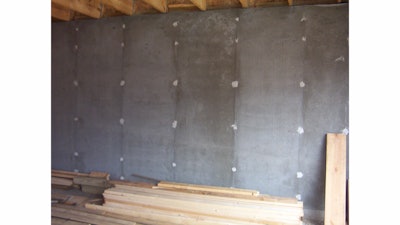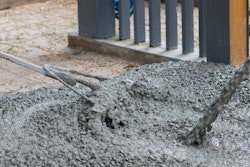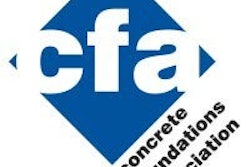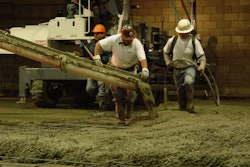
Question: I’m having a hard time convincing some homeowners that they don’t have a drainage problem but rather that they need a dehumidifier in their new basement to offset the effects of the humidity in a foundation. – Concrete Contractor (Iowa).
Answer: This is an age-old question that homeowners ask and should ask when taking over the responsibilities of a new home. Depending on what information the builder communicates to that home owner at the time of possession, the foundation contractor may very well be involved in an early concern for the presence of visible moisture in areas of little or no air movement in the new basement.
First, let me relieve your stress about the presence of that moisture. Is your wall leaking? That is not very likely and in all probability, the potential for that to be of concern is extremely low. Monolithic concrete foundations should be waterproofed and they likely have active drainage systems, however, unless you’ve experienced a flood condition recently, the moisture in a new home is being generated by the wall itself in consort with the non-moving air of the basement and the relative humidity of that air.
The industry standard for cast-in-place concrete is a maximum water-cementitious ratio of 0.45. This means that all concrete in the walls and slab are roughly 45 percent water by volume at time of placement. The process by which the material hardens to solid concrete is called hydration, a chemical process where the cementitious particles react with the free water and produce crystals. This process consumes a large amount of the water during the process and gives off heat.
The rest of the construction process involves building a home from the foundation. The more the home takes shape, the more protection or envelope is built around the concrete adding protection from taking on more moisture (active exposure to the elements) but also preventing evaporation from working to lower the humidity. The National Ready Mixed Concrete Association, in their CIP 28 bulletin for concrete slab moisture offers:
"Allow sufficient time for the moisture in the slab to dry naturally while the floor is under a roof and protected from the elements. Avoid maintenance and cleaning operations that will wet the concrete (floor). Use heat and dehumidifiers to accelerate drying. Since moisture transmission is affected by temperature and humidity, maintain the actual service conditions for a long enough period prior to installing (the floor covering)."
This is a very appropriate recommendation to make to any builder or homeowner and should also be considered when discussing the timing of wall treatments, such as interior insulation, dry wall or other coverings.
Joe Lstiburek of the Building Science Corporation (www.buildingscience.com) is a leading researcher and author on issues of building performance. Moisture in foundations has been a significant topic for his efforts over the past couple of decades, largely due to the prevalence of mold in recent years. In 2002, the Building Science Corporation released their report 0202 on Basement Insulation Systems to give proper guidance to the timing and design for insulating basements. The report states:
"Thousands of pounds of water are contained in freshly placed concrete in basement foundation walls; drying in uninsulated exposed walls takes many months, longer in walls with impermeable insulation systems."
The fact remains that moisture is a natural part, and a required part of the construction process for a high-quality concrete foundation. However, it is essential that the homeowner understands and set proper expectations for how to handle the concrete foundation to achieve the best quality home possible. This includes dehumidification, time or both. It also means that builders must be aware of the air movement in a foundation space to facilitate active movement of air to help remove the excess moisture from the concrete as well as preventing the build-up of moisture in dead air spaces.
Moisture leaving the concrete naturally will raise the relative humidity of the air adjacent to the concrete surface. Concrete, by nature, lags significantly in its temperature change from warm to cool or cool to warm. With such a temperature lag, the rapid change in relative humidity will result in condensation on the concrete surfaces if sufficient air movement or active dehumidification is not present to lower the amount of moisture in the space. This is increasingly important as construction moves toward completion and the home becomes tighter and tighter.
Want to know more? Contact CFA Managing Director, Jim Baty at 866-232-9255 or by email at [email protected]. The CFA is a national association for professionals with the mission to support the cast-in-place contractor as the voice and recognized authority for the residential concrete industry. ACI 332 is the Residential Concrete committee for the American Concrete Institute and as a code committee is seeking professionals from all aspects of this industry with an interest in participating in the development of expanding and strengthening this concrete code.



















